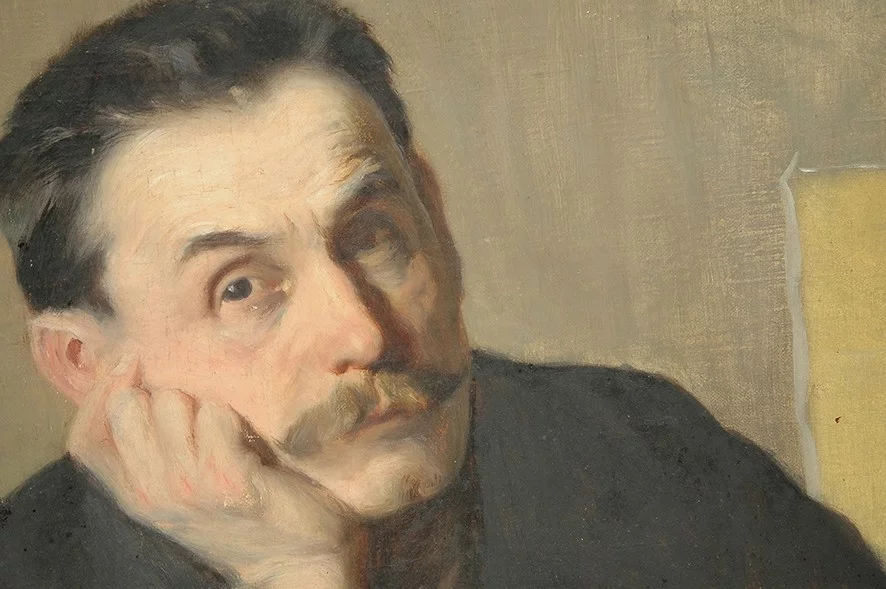Luigi Cima
Luigi Cima was born in Villa di Villa, current municipality of Mel (Belluno) on January 5, 1860. After completing his technical studies in Feltre, he moved to Venice to enroll at the Academy of Fine Arts, where he attended the courses of Eugenio De Blaas. He dedicates himself with preference to scenes of working life in the countryside and mountains of the Feltre area, to the animated landscape with figures of acute realism, to scenes of Venetian life and to portraits.
After completing his artistic studies, he began a series of dense participation in the main national pictorial reviews from the beginning of the Eighties; in 1881 he made his debut at the Permanente in Venice with Casa rustica, Un rivo a Venezia, At the market, obtaining numerous acclaim. The painting The return from the pasture, present at the Turin exhibition in 1884, was purchased by the National Gallery of Modern Art in Rome. In the same year he also participated in the Permanente of Milan and in the review of the Society of Fine Arts of Verona, with Rio dei Secchi and Cortile Rustic.
Cima, working as a draftsman in the studio of the sculptor Dal Lotto and at the same time participating in the Venetian artistic life, meets, by frequenting them, a group of artists with whom he becomes friends such as Giacomo Favretto, Guglielmo Ciardi, Luigi Nono, Bartolomeo Bezzi, Alessandro Milesi.
In 1886 he exhibited three works at the first exhibition of the Permanente in Milan, of which Interno di San Marco in Venice (Prayer to San Marco), which was purchased by Commendatore Federico Milyus. This was followed by the exhibitions in Venice in 1887, where Cima exhibited Beniamino and Maternal Angoscie, Summer and April, with an evident debt to the painting of Luigi Nono; the 1891 exhibition in Munich with The work in the fields and The return from the market, a description of the daily life of the hometown; the Venice Biennale of 1895 with Nevicata and Vacche alla pozza; that of 1897 with I fabbri. In the same year in Verona he presented La capraia; at the National Exhibition of Turin in 1898 At the village festival; in Milan in 1900 In spring. After the Veronese exhibition of 1902, with Last days of autumn and The vigil of the poor, Cima, embittered by his exclusion from the 1903 Venice Biennale, exhibited there again in 1905 (Winter) but then retired to his native town and no longer participates in exhibitions. Cima also dealt with subjects of animals, still lifes and religious compositions.
Among his exhibitions we highlight that from 7 April to 30 June 1990 in the Palazzo delle Contesse di Mel, entitled "Luigi Cima 1860-1944": that from 22 December 2000 to 28 January 2001 in the same venue on the theme: "Luigi Cima and his students "; that in the 150th anniversary of the painter's birth, in the exhibition halls also in Mel-Palazzo delle Contesse, from 8 October 2010 to 6 January 2011 entitled: "Luigi Cima and the Venetian 800".
Cima passed away in Belluno on New Year's Day in 1944, 4 days after turning 84.
Last update: March 18, 2022

 itinerarinellarte.it è un sito che parla di arte in Italia coinvolgendo utenti, musei, gallerie, artisti e luoghi d'arte.
itinerarinellarte.it è un sito che parla di arte in Italia coinvolgendo utenti, musei, gallerie, artisti e luoghi d'arte.